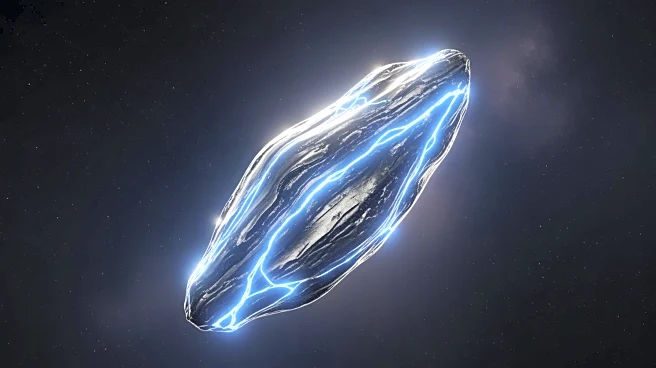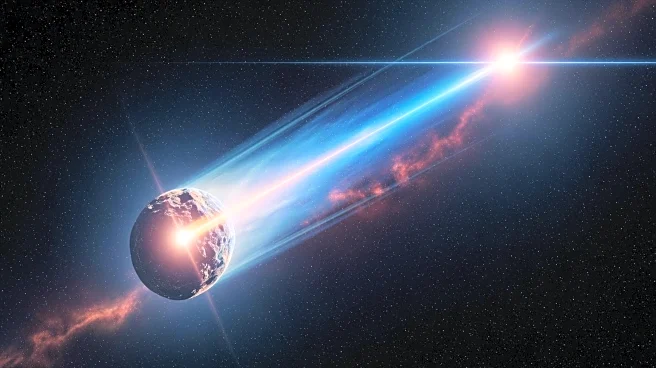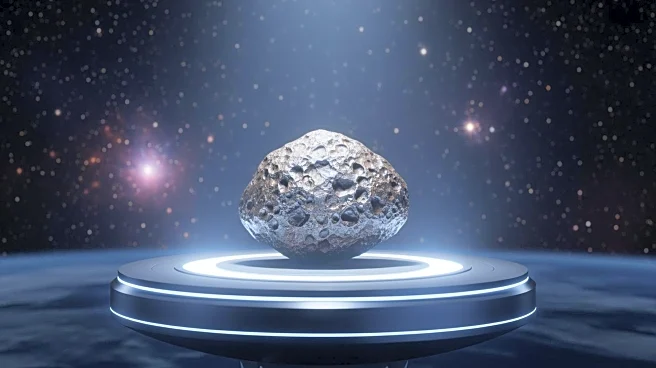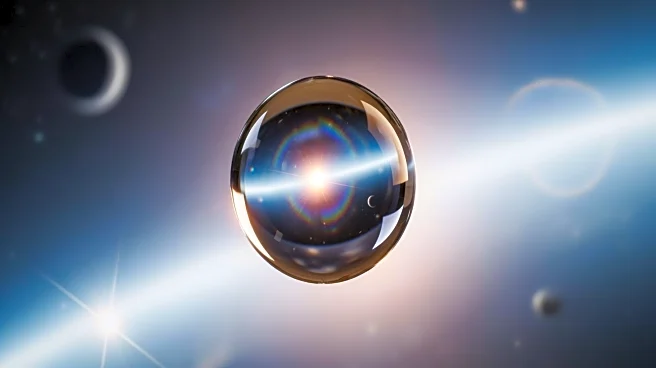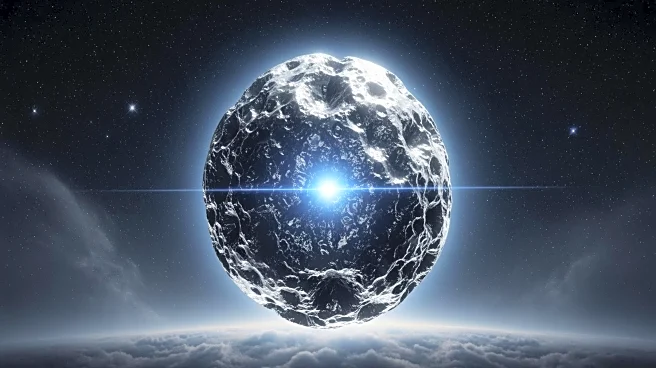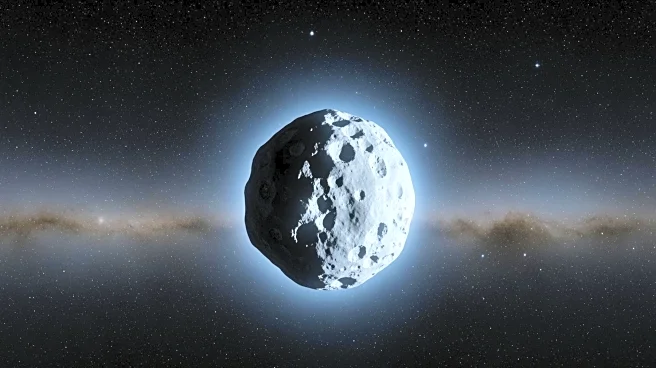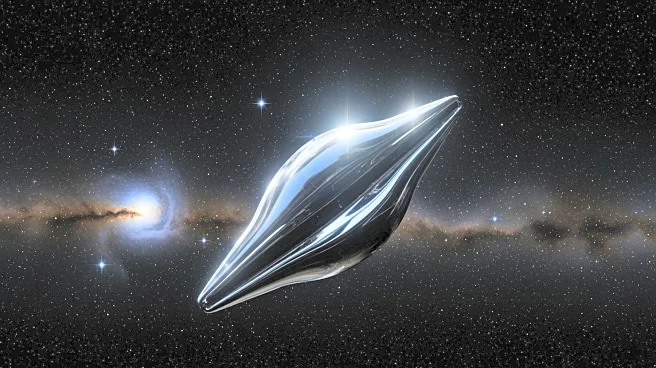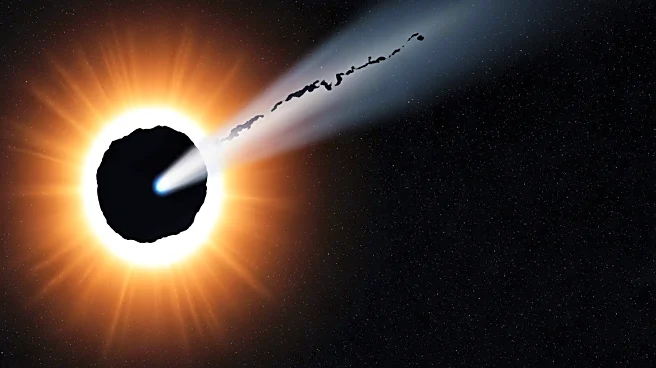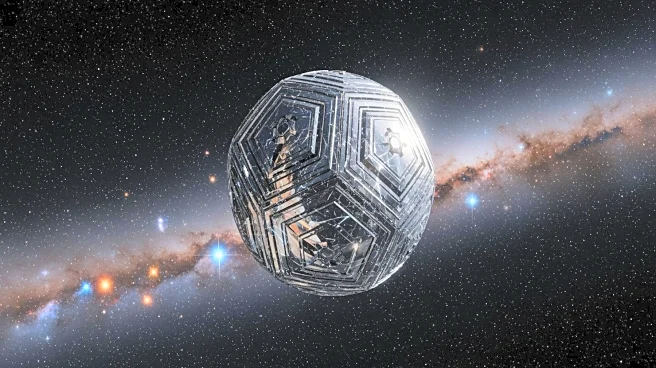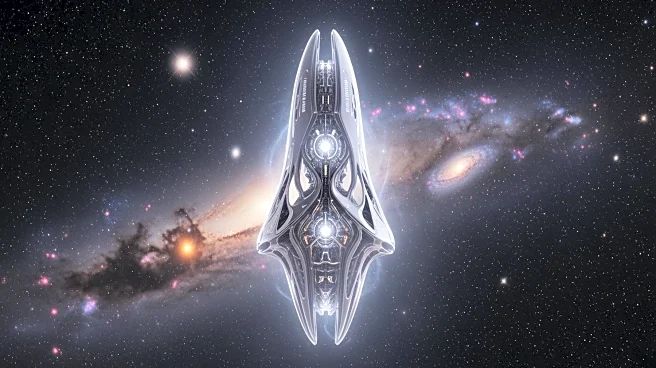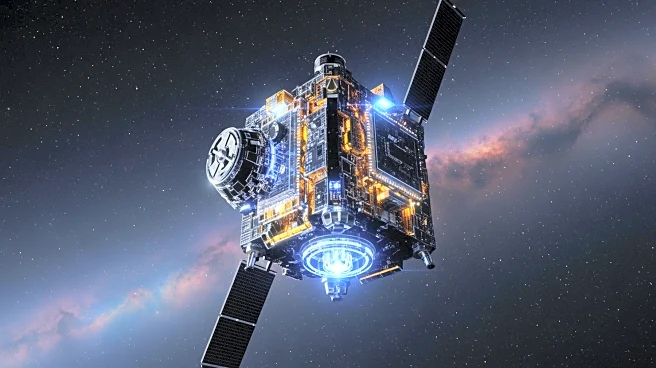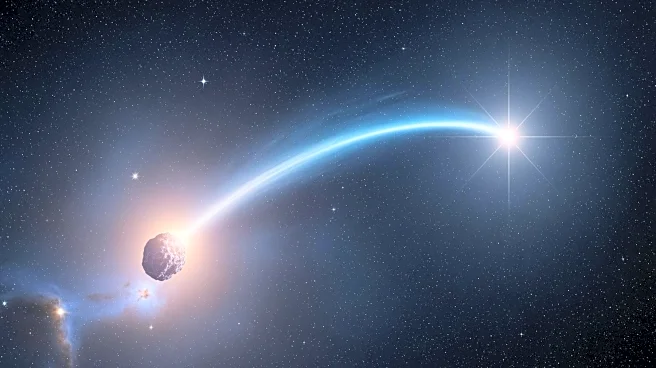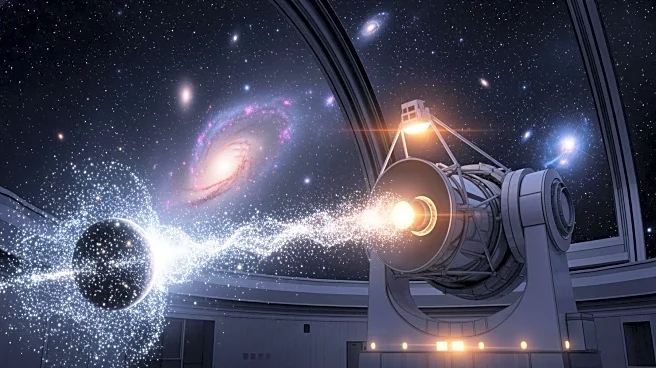What's Happening?
The interstellar object 3I/ATLAS, comparable in size to Manhattan, is emitting a metal alloy never before seen in nature, according to Harvard astrophysicist Dr. Avi Loeb. Observations from the Keck II telescope in Hawaii revealed that the object is producing
nickel tetracarbonyl, a compound typically found in industrial processes, without the presence of iron, which is unusual for comets. The Hubble Space Telescope captured images showing a stream of materials trailing towards the Sun, composed mostly of carbon dioxide and water, with trace amounts of cyanide and nickel. This phenomenon has sparked debate among scientists, with some suggesting it is natural, while Loeb argues it resembles industrial processes.
Why It's Important?
The discovery of 3I/ATLAS's unique emissions challenges existing understanding of cometary composition and interstellar objects. If the object's emissions are indeed industrial-like, it could imply new processes occurring in space, potentially altering theories about the formation and behavior of celestial bodies. This could impact future research in astrophysics and the study of interstellar phenomena, as scientists may need to reconsider the mechanisms behind such emissions. The debate also highlights the importance of continued observation and analysis of interstellar objects to better understand their nature and origins.
What's Next?
Skywatchers and scientists are eagerly awaiting the release of images from the Mars Reconnaissance Orbiter's HiRISE camera, which captured the object as it passed within 12 million miles of Mars. These images could provide further insights into the object's composition and behavior. The ongoing government shutdown has delayed the release of these images, but once available, they may help resolve the debate over the object's emissions and contribute to a deeper understanding of interstellar phenomena.
Beyond the Headlines
The unusual emissions from 3I/ATLAS raise questions about the potential for industrial-like processes occurring naturally in space. This could lead to new theories about the formation of metal alloys in celestial bodies and challenge existing models of cometary composition. The implications extend to the study of other interstellar objects and the possibility of discovering new materials or processes that could inform both scientific research and industrial applications.
